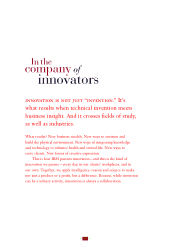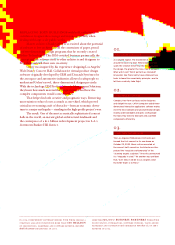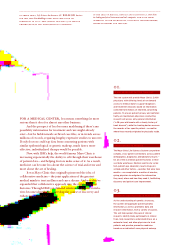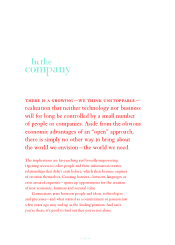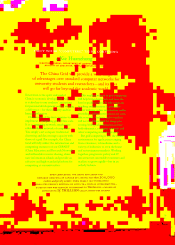IBM 2003 Annual Report Download - page 27
Download and view the complete annual report
Please find page 27 of the 2003 IBM annual report below. You can navigate through the pages in the report by either clicking on the pages listed below, or by using the keyword search tool below to find specific information within the annual report.
25
in the alsace and moselle jurisdictions of
eastern France, what worked to ensure the rights of property
owners has worked against the needs of modern business
development.
Local law in the region keeps things very local. Only
original documents can be used for all land title transactions.
Also, the documents may not leave their regions. And their
authenticity has to be guaranteed—signed—by the local
judge. The rules are in some ways unique, due in part to the
inheritance of regulations and customs from periods of
French and German sovereignty.
The problem was, owners and mortgage bankers could
barely conduct business away from the local courthouse. So
GILFAM, the government bureau that oversees the comput-
erization of the land registry for this part of France, worked
with IBM to create a novel system for on demand security and
the authenticity of digitized titles and deeds. The result is
useful not just for land registries, but for many other regulatory
agencies requiring official approvals and notarizations.
Using smartcards, biometric identification tools and
time stamps, judges will be able to sign registry documents
in digital fashion, making them available online for buyers,
builders and lenders as well. The GILFAM registry and process
have thus been virtualized—one of the keys to making the
business of government on demand.
01.
THE MORE THINGS NEED TO STAY THE SAME…
Land title archives for the three government jurisdic-
tions that make up GILFAM—Moselle and the Upper
and Lower Rhine divisions of Alsace—go back 300
years and have at different times been written in
French, German and Gothic German. An elementary
but necessary step was turning all these deeds—
2.5 million sheets of paper in 40,000 registers held
in 46 registry offices—into digital documents.
As a result of the system created by IBM, the
transfer of real estate titles will now combine the
assurance of a secure system with robust user
authentication, to maintain the registry’s integrity,
as required by law. Something a judge has (such as
a hardware token), plus something the judge knows
(a personal password), and something the judge
“is” (a biometric pattern like a fingerprint) will
produce something everyone can use and trust.
02.
…THE MORE THINGS NEED TO CHANGE
The project for a computerized land registry
(livre
foncier informatisé)
is a good example of the integra-
tion of technology and law in effective e-government.
New processes and supporting technology were created
by the IBM team to support the GILFAM mission, but
new laws had to be passed by the French government
to support the validity of digital signatures and the
authenticity of an e-business registry office.
This model can apply to governments everywhere
as they transform themselves to become on demand.
In the United States, for example, the Food and Drug
Administration has issued regulations that permit
the use of electronic records and digital signatures
in place of paper and handwriting once the outlined
requirements are met. The end result for these
agencies is greater flexibility and efficiency, as
well as easier access for citizens and corporations.





